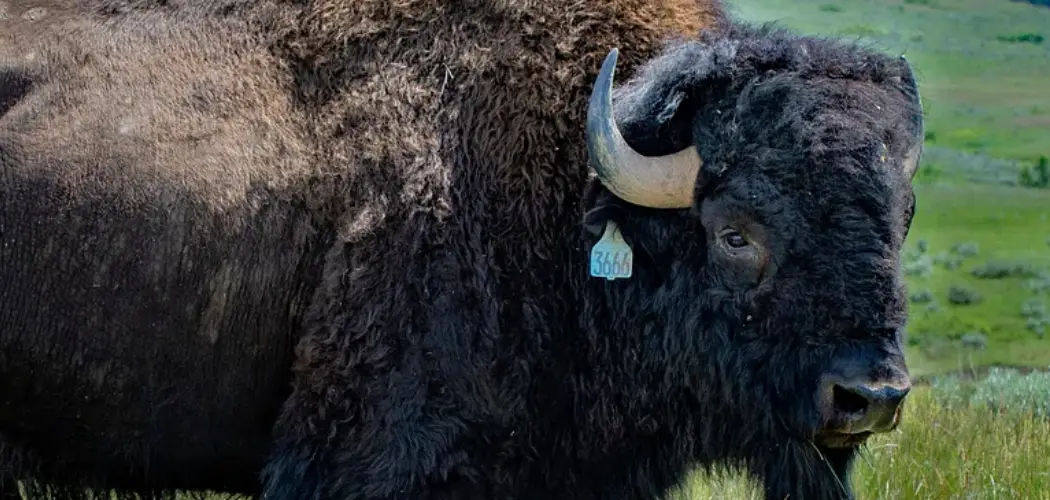Raising bison, also known as buffalo in North America, represents a distinct and rewarding venture within the agricultural and ranching community. This guide aims to enlighten aspiring and established ranchers on how to raise bison responsibly and sustainably.
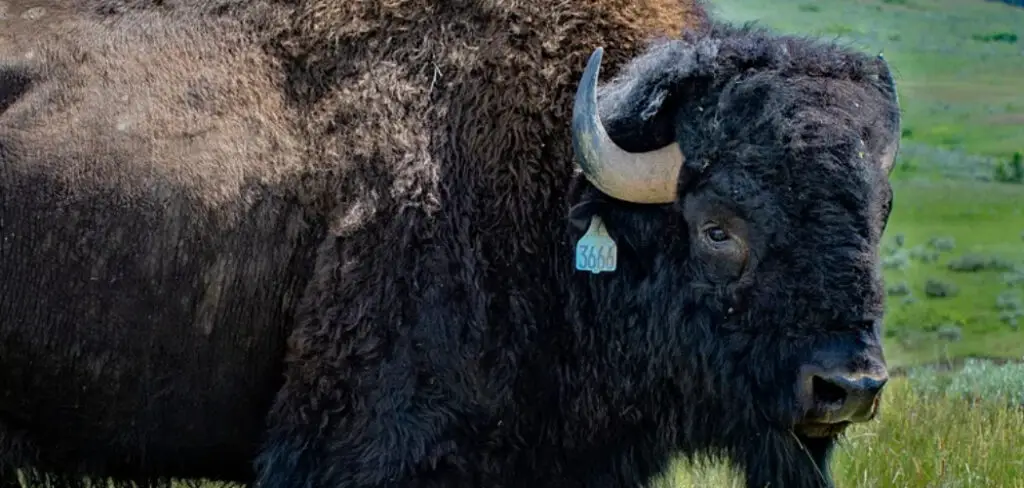
Bison ranching not only offers a unique alternative to traditional livestock farming but also comes with its own set of characteristics, benefits, and considerations that set it apart. These magnificent creatures, known for their resilience and meat quality, require specific husbandry practices to thrive under human care.
The importance of responsible bison husbandry practices cannot be overstated, as they ensure the welfare of the animals, the sustainability of the ranching operations, and the preservation of our natural resources. Through this comprehensive guide, we will explore the essential aspects of bison ranching, from understanding bison behavior and physiology to marketing and legal compliance, all underscored by the overarching theme of sustainable management and welfare.
Understanding Bison Behavior and Physiology
Understanding bison’s intricate behavior and physiology is crucial for anyone learning how to raise bison. These majestic creatures exhibit unique characteristics that differentiate them from other livestock and demand specific management strategies.
A. Social Structure
Bison herds exhibit a complex social structure essential for survival and well-being. The herd typically consists of females (cows), their young (calves), and a few adult males (bulls) during the non-breeding season.
However, come mating season, the dynamics change significantly as bulls compete for dominance and the right to mate with the cows. These social structures and dynamics influence their grazing patterns, reproductive cycles, and overall herd health. Understanding and respecting these hierarchies is key to managing a healthy bison herd.
B. Grazing Patterns
Bison are primarily grazers, with a diet that consists mostly of grasses. Their grazing patterns are influenced by the availability of forage, the season, and their nutritional needs. Bison are known to migrate in search of fresh pasture, which can present challenges in a ranch setting.
Implementing a rotational grazing system can mimic their natural movement, preventing overgrazing and ensuring that the bison have access to high-quality forage year-round. This supports their dietary needs and contributes to pasture health and sustainability.
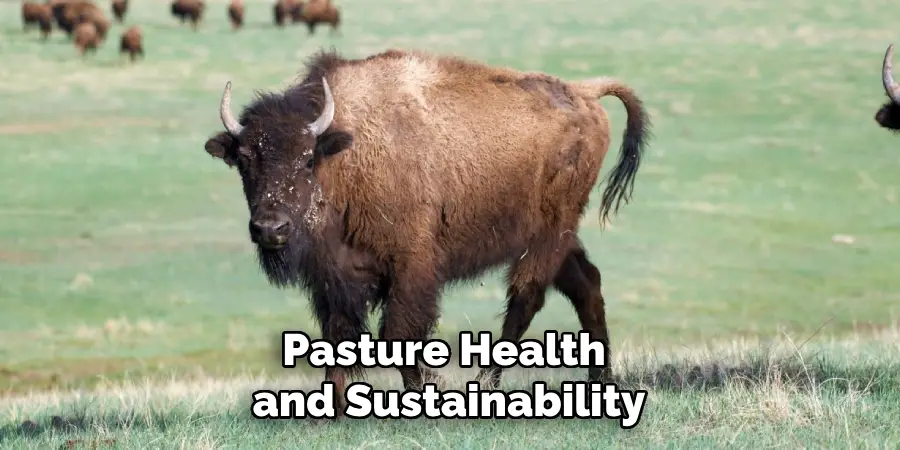
C. Reproduction
Reproductive cycles in bison are governed by natural rhythms that align with the seasons. The calving season typically occurs in the spring, allowing calves to take advantage of summer growth before the harsher winter months. Bulls demonstrate increased aggression and compete for mating rights during the rut, usually in the late summer.
Understanding these cycles is imperative for effective herd management, enabling ranchers to anticipate and prepare for calving season, manage herd dynamics during the rut, and ensure the health and well-being of both cows and calves.
Gaining insight into these aspects of bison behavior and physiology will guide ranchers in creating a nurturing environment that respects the animals’ natural tendencies and promotes a sustainable ranching operation.
How to Raise Bison: Establishing Ranch Infrastructure
Proper infrastructure is paramount to the success of any bison ranching operation. Key elements such as fencing, shelter, and water sources play crucial roles in ensuring the bison herds’ health, safety, and welfare.
A. Fencing
When learning how to raise bison, one quickly realizes the importance of robust and durable fencing. Bison are powerful animals capable of breaking through weak barriers. Therefore, installing sturdy, high-quality fencing designed to withstand their strength is imperative.
Fences should be tall enough to deter jumping and solid enough to prevent breaking through. The use of materials like heavy-duty steel and reinforced wood posts is recommended. Additionally, the design should consider bison’s natural behavior and habitat, allowing them sufficient space to roam without feeling confined.
B. Shelter
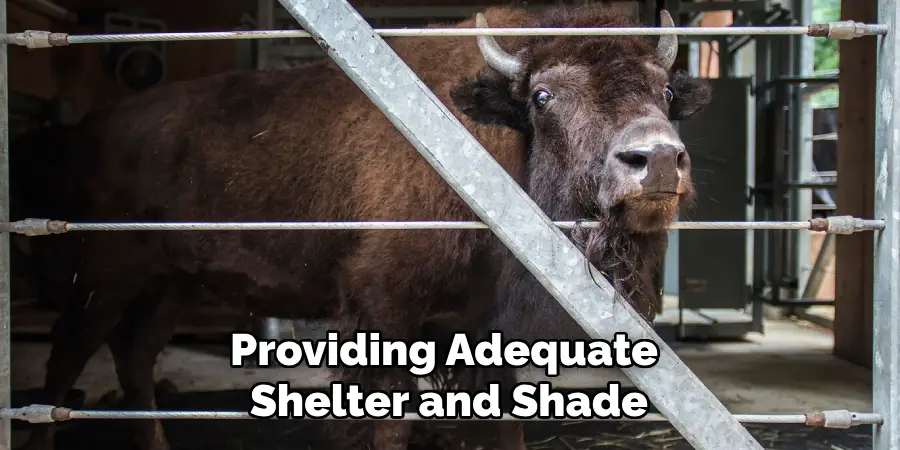
Bison are hardy animals adapted to various weather conditions; however, providing adequate shelter and shade structures is essential to protect them from extreme weather. Shelters can range from natural tree coverings to man-made structures like barns or lean-tos.
These structures should be large enough to accommodate the herd and offer protection from severe storms, heat waves, and the cold. Strategically placed shade structures also ensure that bison can find respite from the sun during hot summer months, contributing to their overall well-being.
C. Water Sources
Access to clean and reliable water sources is another critical component of Bison Ranch’s infrastructure. Bison require significant water daily for drinking and cooling, especially in warmer climates. Ranchers must ensure that fresh, clean water is available at all times, through natural sources like rivers and ponds or through man-made systems such as water troughs.
These systems should be designed to minimize contamination and be easily accessible to the entire herd. Regular maintenance is necessary to prevent algae growth and freezing during the winter and ensure water’s continued availability.
In conclusion, establishing the right infrastructure is foundational to creating a viable and sustainable bison ranching operation. By focusing on strong and appropriate fencing, adequate shelter, and reliable water sources, ranchers can greatly contribute to the health and happiness of their bison herds, setting the stage for a successful ranching endeavor.
How to Raise Bison: Pasture Management and Forage
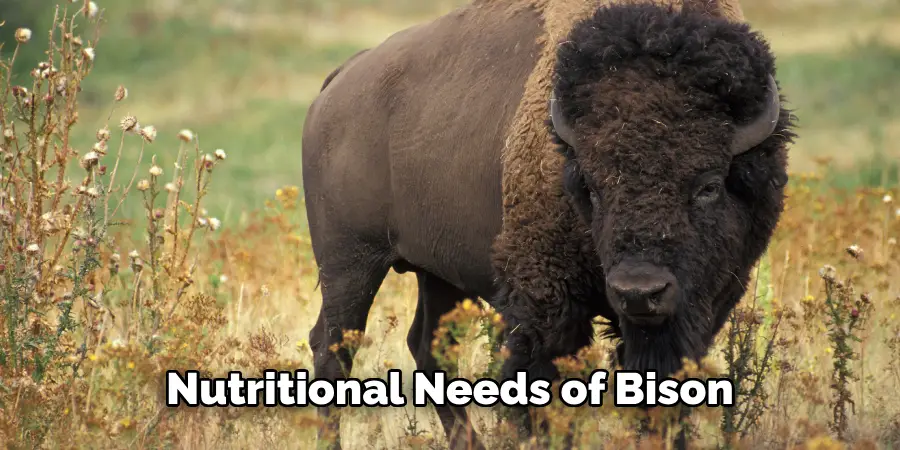
Effective pasture management is central to sustaining a healthy and productive bison ranch. It encompasses everything from the rotational grazing practices that prevent overgrazing to the cultivation of diverse forage types that meet the nutritional needs of bison. Understanding the balance between pasture health and bison well-being can significantly impact the success of your ranching operations.
A. Grazing Rotation
Implementing rotational grazing practices is essential for maintaining pasture health and preventing overgrazing. This approach involves dividing pastures into smaller sections and rotating bison herds through them, allowing each section time to recover and regrow before grazing again.
Rotational grazing mimics the natural movement patterns of wild bison, promoting a healthier ecosystem by encouraging various plant growth, reducing soil erosion, and improving soil fertility. Determining the optimal time to rotate depends on factors such as forage availability, herd size, and the specific recovery rate of the pasture.
B. Forage Diversity
Cultivating diverse pastures is crucial to meet the complex nutritional needs of bison. A mixture of grasses, forbs, and legumes can provide a balanced diet of essential nutrients. Grasses serve as a primary food source; forbs, including broadleaf plants, add variety and additional nutrients; while legumes, like clover or alfalfa, are vital for their high protein content and ability to fix nitrogen in the soil, enhancing soil health.
Diverse pastures not only support the dietary needs of bison but also contribute to the ecological stability of the ranch environment by attracting beneficial insects and promoting a healthier soil microbial community.
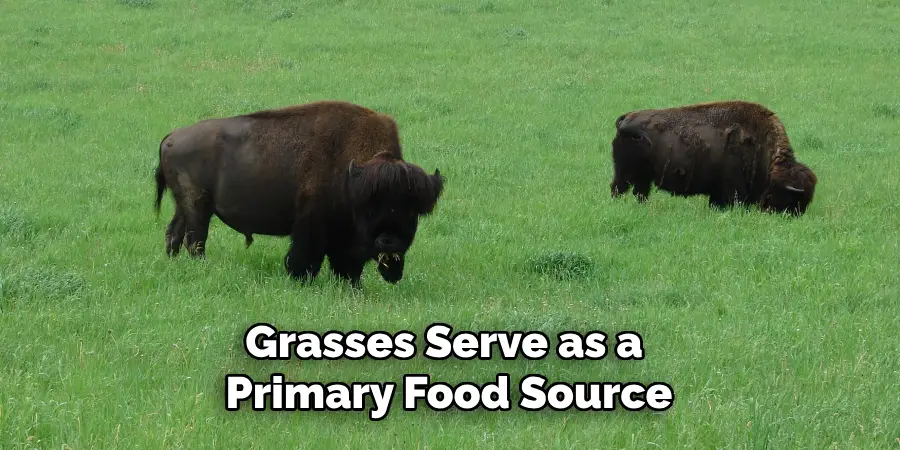
C. Seasonal Considerations
Adjusting grazing patterns and supplemental feeding based on seasonal changes in forage availability is paramount for the sustainability of bison ranching. During the spring and summer, when forage is abundant, bison can largely rely on pasture feeding.
However, in the fall and winter, when the growth of pasture grasses slows down or becomes dormant, supplemental feeding may become necessary to maintain the health and weight of the herd. This can include hay, silage, or other forms of stored forage. Planning for these seasonal changes in advance by assessing forage availability and the herd’s nutritional status ensures that the bison maintain optimal health throughout the year.
In summary, careful pasture management and forage planning are keystones of successful bison ranching. By adopting rotational grazing, fostering forage diversity, and responding to seasonal variations in forage availability, ranchers can support both the nutritional needs of their bison and the health of their ranch ecosystem.
How to Raise Bison: Health and Veterinary Care
Ensuring the health and well-being of your bison herd is paramount for a successful ranching operation. This section outlines the key components of a comprehensive health and veterinary care program, including vaccinations, parasite control, and routine health checks.
A. Vaccinations
Developing a vaccination schedule tailored to the specific needs of your bison herd is a crucial preventive measure against common bison diseases. Consultation with a veterinarian experienced in bison health is essential to identify the vaccinations necessary for your geographic location and specific ranch conditions.
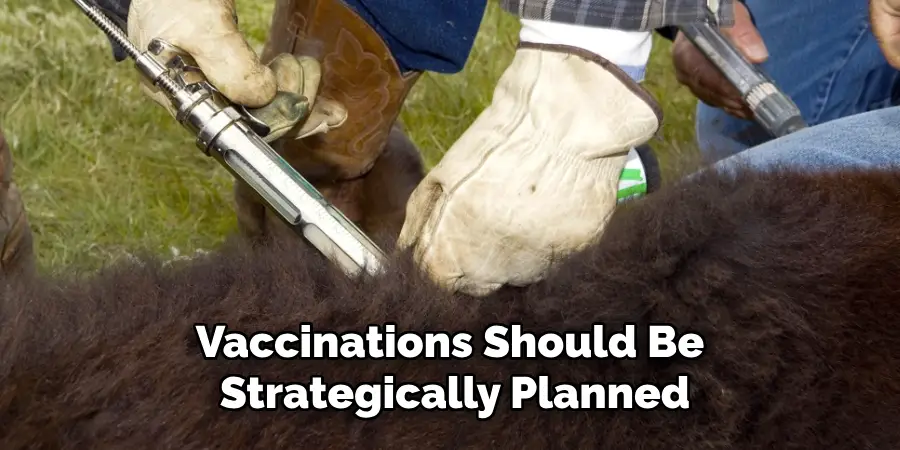
Common vaccines for bison include those against brucellosis, leptospirosis, and clostridial diseases (such as blackleg and tetanus). The timing of vaccinations should be strategically planned to maximize immunity before periods of high stress or when disease exposure risk is greatest, such as before mixing with new animals or before the onset of challenging weather conditions.
B. Parasite Control
Effective parasite management is critical to maintaining herd health and productivity. Parasite control strategies should include regular deworming and strategic pasture rotation to minimize the buildup and exposure of bison to internal and external parasites, including gastrointestinal worms, lice, and ticks.
Deworming schedules and products should be chosen based on veterinary advice, considering the parasites prevalent in your area and the specific needs of your herd. Pasture rotation, as part of your grazing management plan, not only supports soil and pasture health but also disrupts the lifecycle of parasites, reducing their impact on the herd.
C. Routine Health Checks
Regular health checks are essential for early detection and management of potential health issues. Routine health monitoring includes assessing the physical condition of each bison, noting any changes in behavior, appetite, and mobility, and checking for signs of illness or injury. Establishing a good working relationship with a veterinarian who can provide ongoing support, emergency care, and advice on health management practices best suited to your herd is important.
Establishing a regular schedule for these health checks, including annual physical exams and more frequent visual inspections, ensures proactive management of your bison’s health and timely intervention when needed.
Implementing a structured health and veterinary care program is essential for the sustainability and profitability of your bison ranching operation. By prioritizing vaccinations, parasite control, and routine health checks in partnership with veterinary professionals, you can ensure the longevity and well-being of your bison herd.
Handling and Transportation
Proper handling and transportation are crucial for maintaining the welfare and safety of both bison and humans. This section covers the essential aspects of designing bison-handling facilities, establishing transportation protocols, and ensuring that ranch personnel are adequately trained in bison-handling techniques.
A. Bison Handling Facilities
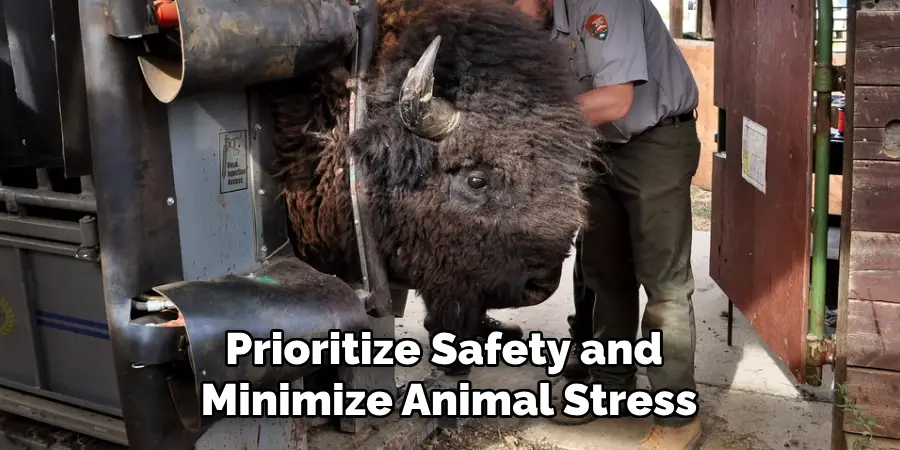
The design and construction of bison handling facilities should prioritize safety and minimize animal stress and injuries. Facilities should allow for ease of movement and include features such as curved chutes and solid walls to reduce the animals’ stress by preventing them from seeing outside the handling area.
Using non-slip flooring and adequate spacing can prevent injuries and improve the overall efficiency of handling operations. It’s also important to design these facilities with the handler’s safety in mind, providing escape routes and barriers as necessary.
B. Transportation Protocols
Best practices for bison transportation are essential to minimize stress and ensure the welfare of the animals during transit. This includes using appropriate vehicles that provide sufficient space, ventilation, and protection from the elements. Loading and unloading should be done calmly and efficiently to minimize stress.
Planning the transportation schedule to avoid extreme temperatures and reduce the duration of the trip as much as possible is also vital. Pre-transportation training, which gets the bison accustomed to the loading process, can significantly reduce stress for both the animals and the handlers.
C. Training and Handling Skills
Training ranch personnel in proper bison handling techniques is fundamental for maintaining safety and efficiency. This training should cover animal behavior, stress minimization techniques, and the use of handling facilities. Understanding the natural behaviors of bison, including their herd instincts and reactions to threats, is critical for safe and effective handling.
Regular refresher courses and practical demonstrations can ensure that all personnel are knowledgeable and prepared to manage these powerful animals with the required respect and care.
By focusing on these key areas, bison ranch operations can ensure the safety and well-being of their animals during handling and transportation, contributing to a more ethical and sustainable ranching practice.
Marketing and Sales
A bison ranch’s marketing and sales strategy is pivotal in determining its financial success and long-term sustainability. This section delineates key components such as market research, branding, marketing strategy, and establishing effective distribution channels.
A. Market Research
Conducting thorough market research is the foundational step in understanding the demand dynamics for bison products. This research should focus on identifying target markets, ranging from consumers interested in high-quality, sustainable meat options to restaurants and retailers looking for premium products.
Understanding consumer preferences, such as cuts of meat, packaging, price points, and broader market trends in the food industry related to health, sustainability, and ethical farming practices, can inform product development and marketing strategies.
B. Branding and Marketing
Developing a strong brand identity is crucial for distinguishing Bison products in a competitive market. This involves crafting a unique selling proposition that emphasizes the qualities that make bison meat appealing, such as its health benefits, superior taste, and environmental sustainability.
An effective marketing strategy should leverage multiple channels to reach a broad audience, including digital marketing, social media, and traditional advertising. Engaging storytelling that communicates the ranch’s values and practices can help build a loyal customer base.
C. Distribution Channels
Establishing relationships with various distribution channels is critical to ensure bison products reach consumers. This includes negotiating with retailers to secure shelf space, partnering with restaurants that wish to feature bison on their menus, and exploring direct-to-consumer sales through online platforms and farmers’ markets.
Each channel has different pricing, packaging, and volume requirements, necessitating a flexible approach to sales and distribution. Direct-to-consumer sales, in particular, offer an opportunity to build brand loyalty and gather customer feedback directly, which can be invaluable for refining marketing strategies and product offerings.
Legal and Regulatory Compliance
Ensuring compliance with legal and regulatory requirements is critical for the smooth operation of a bison ranch. This section addresses the key permits, licensing, animal welfare, and environmental stewardship areas.
A. Permits and Licensing
To operate legally, bison ranchers must obtain the necessary permits and licenses in accordance with local, state, and federal regulations. This process involves understanding the specific requirements for bison ranching operations, which may vary significantly from one jurisdiction to another.
Initiating this process well before beginning operations is crucial to avoid any legal or operational delays. Regular consultations with legal experts in agricultural operations can help ranchers stay abreast of any regulation changes that may affect their business.
B. Animal Welfare Standards
Adhering to established animal welfare guidelines and standards is a legal requirement and a moral obligation for bison ranchers. Compliance with these standards ensures that bison are raised in conditions that meet their physiological and psychological needs.

This includes adequate space, access to food and water, and proper veterinary care. Ranchers should familiarize themselves with the guidelines set forth by relevant regulatory agencies and third-party animal welfare organizations to ensure their practices are up-to-date.
C. Environmental Stewardship
Bison ranching offers a unique opportunity to practice sustainable agriculture that respects and preserves the natural environment. Ranchers are encouraged to implement practices that minimize their environmental impact, such as managing grazing to prevent overuse of land, conserving water, and protecting local wildlife habitats.
Sustainable ranching practices not only comply with environmental regulations but also enhance the long-term viability of the ranching operation by preserving natural resources.
Conclusion
Raising bison successfully requires a comprehensive understanding of and commitment to best animal handling, welfare, and ranch management practices. This includes training personnel in bison behavior and handling, developing effective marketing and sales strategies, and ensuring legal and regulatory compliance. Understanding how to raise bison involves both these operational aspects and a deep appreciation for the species’ unique needs and behaviors.
Responsible ranching practices are at the heart of sustainable bison husbandry, emphasizing the importance of animal welfare, environmental stewardship, and ethical management. Adhering to these principles ensures the health and well-being of the bison herds, supports the ecosystem, and builds a solid foundation for the ranch’s future.
As you venture into the world of bison ranching, remember that your practices contribute significantly to the resurgence and sustainability of these magnificent creatures.
By prioritizing responsible ranching and animal welfare, you are ensuring not only the success of your ranch but also the prosperity of bison populations for generations to come. Wishing you every success in your bison ranching endeavors and the sustainable management of bison herds!
About
Outdoor Fixes is a distinguished figure in the world of Diy design, with a decade of expertise creating innovative and sustainable Diy solutions.
His professional focus lies in merging traditional craftsmanship with modern manufacturing techniques,
fostering designs that are both practical and environmentally conscious. As the author of diy,
outdoorfixes delves into the art and science of outdoorfixes-making, inspiring artisans and industry professionals alike.
Education RMIT University
(Melbourne, Australia) Associate Degree in Design (Outdoor Fixes) Focus on sustainable design, industry-driven projects,
and practical craftsmanship. Gained hands-on experience with traditional and digital manufacturing tools, such as CAD and CNC software.
Nottingham Trent University
(United Kingdom) Bachelor’s in outdoorfixes.com and Product Design (Honors) Specialized in product design with a focus on blending creativity with production
techniques. Participated in industry projects, working with companies like John Lewis and Vitsoe to gain real-world insights.
Publications and Impact
In diy, Outdoor Fixes his insights on indoor design processes, materials, and strategies for efficient production.
His writing bridges the gap between artisan knowledge and modern industry needs, making it a must-read for both budding designers and seasoned professionals.

